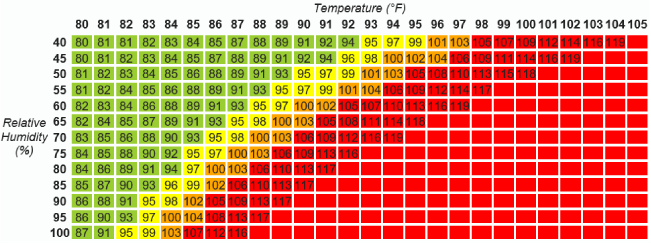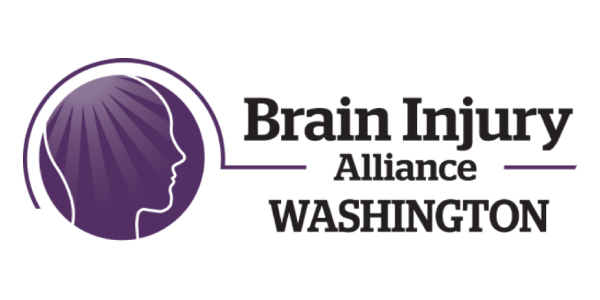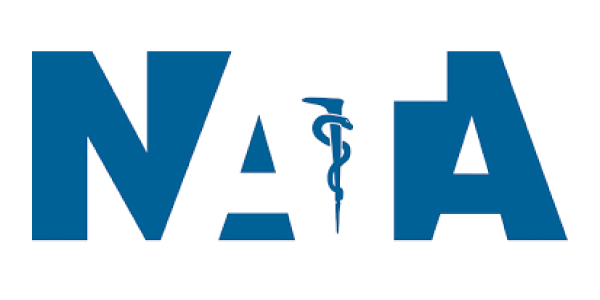HEALTH & WELLNESS
jump to:
CONCUSSION MANAGEMENT GUIDELINES
POLICIES FOR THE MANAGEMENT OF CONCUSSION AND HEAD INJURY IN YOUTH SPORTS:
An act relating to requiring the adoption of policies for the management of concussion and head injury in youth sports; amending RCW 4.24.660 and adding a new section to chapter 28A.600 RCW.
Each school district’s board of directors shall work in concert with the Washington Interscholastic Activities Association (WIAA) to develop the guidelines and other pertinent information and forms to inform and educate coaches, youth athletes, and their parent(s)/guardian(s) of the nature and risk of concussion and head injury including continuing to play after concussion or head injury. On a yearly basis, a concussion and head injury information sheet shall be signed and returned by the youth athlete and the athlete’s parent and/or guardian prior to the youth athlete’s initiating practice or competition.
A youth athlete who is suspected of sustaining a concussion or head injury in a practice or game shall be removed from competition at that time. A youth athlete who has been removed from play may not return to play until the athlete is evaluated by a licensed health care provider trained in the evaluation and management of concussion and receives written clearance to return to play from that health care provider.
CONCUSSION TRAINING VIDEO
This video was made possible by Harborview Medical Center and The University of Washington.
sideline assessment for suspected concussion
Beginning with the 2015-16 school year, for contests of all levels – middle school, high school, varsity and sub-varsity – in which WOA (Washington Officials Association) registered officials are being used:
- At the pre-contest conference between the coach and officials, the official will ask the coach if he/she has a licensed healthcare provider that is authorized to evaluate possible concussions on-site.
- If the answer is yes, the health care provider must be on-site and able to be summoned to evaluate a potential concussion.
- If the team does have an approved health care provider with them and an official removes an athlete from play for possible concussion signs or symptoms, that athlete could return to play provided they are cleared by that on-site health care provider.
- If the team does not have an approved healthcare provider available and the official removes an athlete from play for possible concussion signs or symptoms, that athlete will not be allowed to return to play during that contest.
WIAA Coaches:
- Shall be educated as to the nature and risk of concussion and head injuries including continuing to play after concussion or head injury. This education shall include signs and symptoms of concussion/brain injury. This education is available at no charge to coaches via the sport-specific WIAA online rules clinics. Coaches shall educate their athletes on the signs and symptoms of concussion and encourage athletes to notify a coach if they or a teammate exhibits those signs or symptoms.
- Shall immediately remove from participation/competition any athlete who is suspected of sustaining a concussion or head injury.
- Shall not allow an athlete who has been removed from play because of a suspected concussion/brain injury to return to play until the athlete has received written clearance from a licensed healthcare provider trained in the evaluation and management of brain injuries.
ParentS/Guardians shall annually review, sign and return to the school, a concussion and head injury information sheet prior to the youth athlete initiating practice or competition.
RESOURCE: Center for Disease Control & Prevention: Traumatic Brain Injury & Concussion
Athletes shall annually review, sign and return to the school, a concussion and head injury information sheet prior to initiating practice or competition. Athletes are encouraged to notify a coach if they or a teammate exhibit signs or symptoms of a concussion/brain injury.
WIAA Member Schools:
- Shall adopt policies for the management of concussion and head injuries in youth sports.
- Shall ensure that all coaches (paid or volunteer) are educated in the nature and risk of concussion or head injury prior to the first practice/competition. This education shall include signs and symptoms of concussion/brain injury. This education is available at no charge to coaches via the sport-specific WIAA online rules clinics.
- Shall annually require all athletes and the parent(s)/guardian(s) of those athletes to sign and return an information sheet relating to the nature and risk of concussion or head injury. This information sheet shall include the signs and symptoms of concussion/brain injury.
- Shall ensure that any athlete showing signs or symptoms of concussion/brain injury is removed from participation immediately, and not allowed to return to play until they have written clearance from a licensed health care provider trained in the evaluation and management of concussion/brain injury.
- Shall require all non-profit youth sports groups utilizing school facilities to provide a “statement of compliance” (below) with the policies for the management of concussion and head injury. This statement of compliance shall be returned to the school district prior to the group’s first practice/competition.
What licensed healthcare providers are trained in the evaluation and treatment of concussions/brain injuries and authorized to allow the athlete to return to play?
- Medical Doctors (MD)
- Doctor of Osteopathy (DO)
- Advanced Registered Nurse Practitioner (ARNP)
- Physicians Assistant (PA)
- Licensed Certified Athletic Trainers (AT/L)
- Research is currently being done to determine which other licensed healthcare providers may have sufficient training to qualify to authorize return-to-play. The WIAA will update schools and this website as this information becomes available.
sudden cardiac ARREST requirement (sb 5083)
PRCW 28A.600: The Washington Interscholastic Activities Association (WIAA) shall work with member schools’ board of directors, a nonprofit organization that educates communities about sudden cardiac arrest in youth athletes, and the University of Washington medicine center for sports cardiology to develop and make available an online pamphlet that provides youth athletes, their parents or guardians, and coaches with information about sudden cardiac arrest. The online pamphlet must include information on the nature, risk, symptoms and warning signs, prevention, and treatment of sudden cardiac arrest. The online pamphlet shall be posted on the Office of the Superintendent of Public Instruction’s website. The Washington Interscholastic Activities Association (WIAA) shall work with member schools’ board of directors, an organization that provides educational training for safe participation in athletic activity, and the University of Washington medicine center for sports cardiology to make available an existing online sudden cardiac arrest prevention program for coaches. On a yearly basis, prior to participating in an interscholastic athletic activity a sudden cardiac arrest form stating that the online pamphlet was reviewed shall be signed by the youth athlete and the athlete’s parents and/or guardian and returned to the school. Every three years, prior to coaching an interscholastic athletic activity coaches shall complete the online sudden cardiac arrest prevention program described in this section. Coaches shall provide a certificate showing completion of the online sudden cardiac arrest prevention program to the school.
SUDDEN CARDIAC ARREST RESOURCES
recognition and management of sudden cardiac arrest in athletes
heat index calculator
HEAT INDEX POLICY
When the Heat Index meets or exceeds 70°F it is recommended that all schools provide at any practice or event, a method for rapidly cooling athletes experiencing heat illness. Approved methods include ice water immersion or tarp assisted cooling with oscillation (TACO). Schools shall monitor the heat index for their geographic area prior to practices. Outlined below are the steps that each member school shall take in order to implement this policy.
NOTE: This policy applies to all WIAA sanctioned sports and activities in all seasons. Indoor activities where air conditioning is available are not bound by this policy.
- DESIGNATE: Schools shall designate someone who will take the necessary steps to determine and record the heat index for your geographic area within one hour of the start of each team’s practice and events. This is only necessary on days when the forecasted heat index is 85°F or higher. Depending on practice and event schedules, it is possible that the designated person will have to record the Heat Index multiple times on the same day.
- CALCULATE: Within one hour of each team’s practice on days when the forecasted heat index is 85°F or higher, the designated person shall utilize the WIAA Heat Index Calculator to determine the actual heat index.
- RECORD: If the actual heat index is 85°F or higher, the designated person shall record it using the WIAA Heat Index Record or by printing out a copy to be kept at the school for inspection at the request of the WIAA. A separate record shall be kept for each sport at each level. Practice modification, as necessary, shall also be recorded. If the actual heat index is less than 85°F, no action is needed.
- ACT: If the actual heat index is 95°F or higher, activity should be altered and/or eliminated using the following guidelines:
WIAA Recommendation: Stop all outside activity in practice and/or play and stop all inside activity if air conditioning is unavailable.
WIAA Recommendation: Postpone practice to later in the day.
- Maximum of 4 hours of practice per day.
- Practice length a maximum of 2 hours, one practice shall be during a time of day with a lower heat index.
- Mandatory 3-hour recovery period between practices.
- Alter uniform by removing items if possible – allow for changes to dry t-shirts and shorts.
- Contact sports and activities with additional equipment – players are restricted to helmets, shoulder pads and shorts during practice. Other possible equipment removed if not involved in contact or necessary for safety.
- Reduce time of planned outside activity as well as indoor activity if air conditioning is unavailable.
- Provide unlimited amounts of water.
- Water shall always be available and athletes should be able to take in as much water as they desire.
- Watch/monitor athletes for necessary action.
WIAA Recommendation: Consider postponing practice to later in the day.
- Maximum of 4 hours of practice per day.
- Practice length a maximum of 2 hours.
- Mandatory 3-hour recovery period between practices.
- Contact sports and activities with additional equipment – helmets and other possible equipment removed if not involved in contact or necessary for safety.
- Provide unlimited amounts of water.
- Water shall always be available and athletes should be able to take in as much water as they desire.
- Watch/monitor athletes for necessary action.
- Maximum of 5 hours of practice per day in divided sessions.
- Provide unlimited amounts of water.
- Water should always be available and athletes should be able to take in as much water as they desire.
- Watch/monitor athletes for necessary action.
- Maximum of 5 hours of practice per day in divided sessions.
- Provide unlimited amounts of water.
- Water shall always be available and athletes should be able to take in as much water as they desire.
CALCULATION DETAILS
A heat index is an index that combines air temperature and relative humidity in an attempt to determine the human-perceived equivalent temperature; “how hot it feels.” The result is also known as the “felt air temperature” or “apparent temperature.” For example, when the temperature is 90°F with very high humidity, the heat index can be about 106°F.
The human body normally cools itself by perspiration, or sweating. Heat is removed from the body by evaporation of that sweat. However, relative humidity reduces the evaporation rate because the higher vapor content of the surrounding air does not allow the maximum amount of evaporation from the body to occur.

Higher humidity results in a lower rate of heat removal from the body, hence the sensation of being overheated. This effect is subjective; however, studies have been performed to normalize heat index representation (ksi.uconn.edu).
The table above is a listing of the calculated heat index values which match the U.S. National Oceanic and Atmospheric Administration’s table. The colors correspond to WIAA’s categorization (NOTICE, CAUTION, WARNING, and DANGER).
Looking at the table, it is important to note that any temperature above 86°F will “feel” at least 86°F. Virtually every heat index will be at least the current temperature, if not hotter.
![]()
The WIAA website uses a custom script to calculate a given heat index and forecasted heat index for a given location (i.e. city name or ZIP code). This is accomplished via a weather API service through AccuWeather.
This resource allows us to plug in a specific location and get back a data packet with pertinent information to determine a heat index. Specifically, we extract the returned current temperature, relative humidity, and forecasted high temperature. Our custom calculator then takes those variables to get a current heat index and a forecasted “high heat index”. The calculator will then show WIAA recommendations in accordance with the WIAA practice model.
Two variables, temperature (T) and relative humidity (R), are necessary to calculate a heat index. Given a current temperature and a relative humidity, a heat index can be calculated easily using the following polynomial equation. The formula approximates the heat index in degrees Fahrenheit and conforms to the NOAA National Weather Service’s Heat Index Lookup Table.
![]()
This equation is the result of a multivariate fit (temperature ≥ 80°F and relative humidity ≥ 40%) to a model of the human body. This equation does not work with temperatures under 80°F nor a relative humidity under 40% (values outside of that range are assumed to be the given temperature; i.e. 96°F with relative humidity of 25% would yield a heat index of 96°F).

There are other website services out there that can report a heat index. Those sites (like NOAA’s heat index maps) provide a heat index forecast for a broad area and are updated less frequently that the weather service WIAA implements. Most weather providers rely on National Weather Service (NWS) observation stations that are primarily located at airports and military bases. Each state only has a handful of these stations. The entire state of New York has less than fifty such sites, for example. Their reports are only accurate and relevant in the immediate vicinity of the observation station and generally updated only once every hour.
The AccuWeather API service generates forecasts with Superior Accuracy™ harnessing the expert skills of the world’s leading meteorologists in tandem with the most robust database of forecast models, most advanced global forecast engine, proprietary patents, and comprehensive validation results pinpointed for every location on Earth. This allows the WIAA Heat Index Calculator to use data for geographically specific results and up-to-date information.
It is recommended that WIAA schools check their practice location’s heat index through the WIAA Heat Index Calculator, no other site. The heat index is categorized and suggested practice modifications are provided. This helps us ensure consistency and lends an easier approach for school administrators and coaches.
PRACTICE MODEL
WIAA Handbook: Executive Board Policies (Revised 2020)
Schools and students are required to adhere to the following practice model:
- Insert cooling tub requirements within specific sports sections or in a general area:
- When the Heat Index meets or exceeds 70°F it is recommended that all schools provide at any practice or event, a method for rapidly cooling athletes experiencing heat illness. Approved methods include ice water immersion or tarp assisted cooling with oscillation (TACO).
If you move practices inside the same restrictions apply unless the indoor facility is climate controlled. Must apply to all sports.
PRE-CONTEST TIMEOUT
A ‘Pre-Contest Timeout’ is designed to prepare officials, coaches, site administrators, athletic trainers, emergency medical services, team physicians and anyone designated as responsible for the safety and medical well-being of athletes or spectators on game day to be aware, prepared and educated.
PRINTING YOUR PRE-CONTEST TIMEOUT CARD: Print two sided (on both sides) with a flip on the long edge. The current formatting aligns so the card is double sided and easy to cut out for distribution. Cards should be venue-specific, laminated, and provided to the appropriate coaches and school personnel.
Participants: The official(s) and home/away coach should meet prior to the contest start to review the checklist questions in the event of an emergency or contest interruption. If present, the athletic director (AD), athletic trainer (ATC), team physician, EMS, and site supervisor should be included in the pregame medical timeout.
Checklist Questions: Review these questions with the participants of the pre-contest timeout prior to each contest to ensure that all parties are on the same page.
- Is an athletic trainer onsite? If not, who is the lead responder for an emergency?
- Where is the closest AED and who will retrieve it?
- Is other emergency equipment available? (Spine board, splints, first aid kit)
- Are there environmental concerns? (Heat index, lightning)
- Emergency communication? (Hand signals, radio, cell)
- Who will call 911 and meet arriving EMS? (Location and access)
- Cover contest interruption policy and who officials will communicate with
Emergency Information: The BACK of the pre-contest timeout card is for you to edit and include your venue/site specific information and important contacts. The form is fillable so you can provide your own information in the boxes. Include phone numbers of individuals that need to be contacted in the event of an emergency or situation. These individuals could include the athletic director, principal, security, school resource officer, athletic trainer, game manager, etc. Each school is unique as to who they have in attendance at a particular contest.
Venue Address: Include the general address for the contest (i.e. stadium, school, soccer field, etc.)
EMS Arrival: Include directions on how EMS will get to your specific location.







